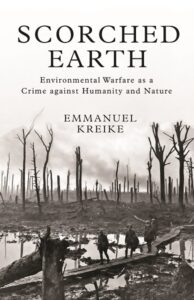 While most of us have very likely heard – and even used – the phrase “scorched earth” as a metaphor for some level of damage left in the wake of an action such as the quitting of a job or the breaking of a romantic relationship, there’s a reasonable chance that in doing so we haven’t fully understood the severity of the words we uttered.
While most of us have very likely heard – and even used – the phrase “scorched earth” as a metaphor for some level of damage left in the wake of an action such as the quitting of a job or the breaking of a romantic relationship, there’s a reasonable chance that in doing so we haven’t fully understood the severity of the words we uttered.
At its core, scorched earth implies a level of severe destruction visited upon not only an adversary but the source of that aversary’s ability to obtain the necesities of life into the future. Indeed, it is the intentional infliction of as much violence and destruction as possible upon the very Earth itself. It is environmental warfare, a nightmare-inducing strategy of of total war; Ares himself unrestrained, unlimited, and unrepentant.
While salting fields and poisinong wells as techniques of warfare can be traced all the way back into the days of classical antiquity, it has only been in the past few centuries that humans have been able to wage large-scale war against the environment itself in pursuit of their malicious ends. In his new book Scorched Earth: Environmental Warfare as a Crime against Humanity and Nature, Dr. Emmanuel Krieke explores the history of such large scale environmental warfare as far back as the early modern period and then follows it up to the present day. Then, from his presentation of such, he links ecocide with genocide in making a case for why these two human-generated horrors “are not separate phenomena, and why international law must recognize environmental warfare as a violation of human rights” – creating the expanded concept of “crimes against humanity and nature.”
Available from:
If you enjoyed reading this, please consider signing up for The Well-read Naturalist's newsletter. You'll receive a helpful list of recently published reviews, short essays, and notes about books in your e-mail inbox once each fortnight.

